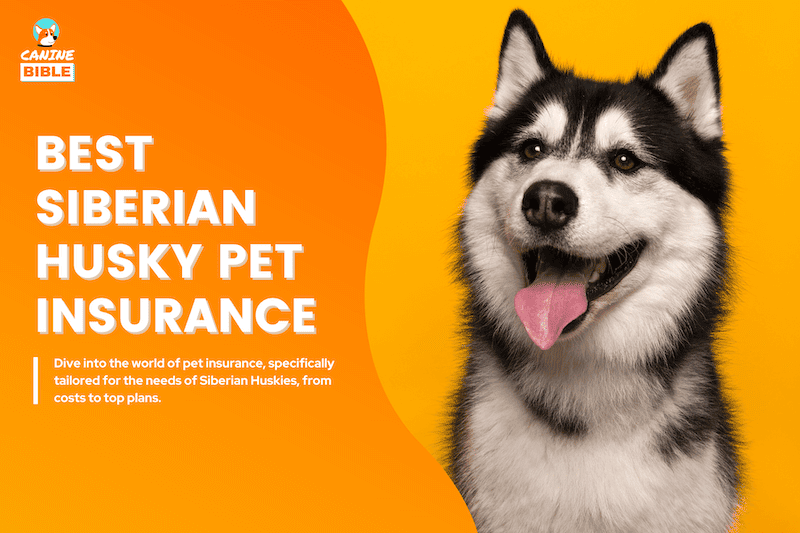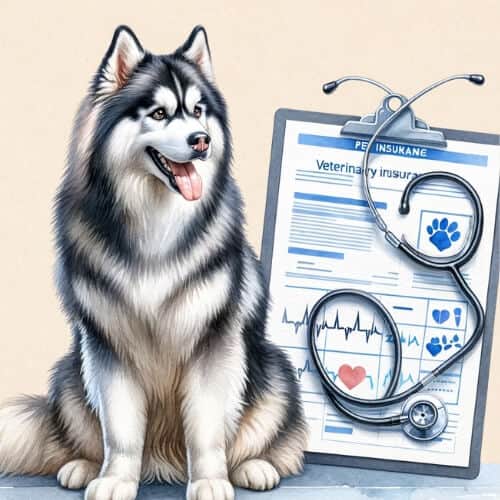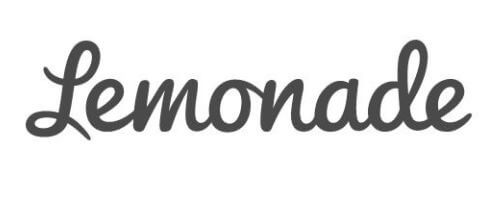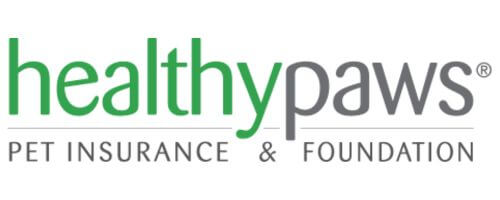Best Pet Insurance For Siberian Husky: Top Plans, Cost & Quotes

Canine Bible is reader-supported. We receive affiliate commissions via some of our links. This doesn’t affect rankings. Learn more.
This is the most comprehensive guide to finding the best pet insurance for Huskies. Is pet insurance a good idea for your Siberian Husky? Huskies are beautiful dogs with mischievous and hyperactive personalities, making them prone to accidents. They are generally healthy but have health conditions that can run up your vet bills. Today, we’ll look at some of the best pet insurance plans for Huskies and answer breed-specific questions about pet insurance. We also outline the costs, benefits and cover the breed-specific reasons you may consider insuring your Husky. So, what is the best pet insurance for Huskies? And how much will it cost? Let’s dive right in!

Why you should trust us: Our writers, editors, and in-house veterinarians spend hours analyzing and reviewing products and services to help find what’s best for you. Read the product review methodology and editorial mission to find out how we test, analyze, and rate.
Best Siberian Husky Pet Insurance — At A Glance
What Is Siberian Husky Pet Insurance: Pet insurance is a healthcare policy that provides coverage for your pet, offering reimbursement for specific veterinary expenses. This ensures that your savings remain secure despite unforeseen medical costs. Such a policy involves a monthly premium. Should your pet fall ill or sustain an injury, you would file a claim with the insurance company to recoup your expenses.

The monthly premium for Siberian Husky’s pet insurance
$29 to $64
How Much Does Pet Insurance Cost For Siberian Huskies?
The cost of insurance for a Husky dog will vary based on several factors, including the pet’s existing health conditions, sex, age, and the area you reside in. It’s important to remember that with the progression of veterinary technology and increased claims within your locality, your insurance premiums may rise. For example, even if your Husky is quoted at $55 per month, this rate is not fixed and could change.
According to our research, plans for Huskies can range from $29 to $64. You may spend more or less depending on where you live, the deductible rate and the reimbursement percentage you choose. Siberian Husky dog owners can expect to pay an average $42 monthly premium.
Pet Insurance Quotes For Siberian Huskies
We compared quotes from renowned pet insurance providers to estimate your expected average monthly premium for different life stages in Huskies.
| Company | Deductible | Reimbursement | Annual Reimbursement Limit | Monthly Price | Location | Gender | Breed | Age |
|---|---|---|---|---|---|---|---|---|
| Lemonade | $500 | 80% | $100,000 | $29.46 | SC, 29044 | Male | Siberian Husky | 5 years |
| Spot | $500 | 80% | Unlimited | $51.20 | SC, 29044 | Male | Siberian Husky | 5 years |
| Healthy Paws | $500 | 80% | Unlimited | $38.25 | SC, 29044 | Male | Siberian Husky | 5 years |
| Lemonade | $500 | 80% | $100,000 | $35.66 | CA, 95842 | Female | Siberian Husky | 2 years |
| Spot | $500 | 80% | Unlimited | $57.33 | CA, 95842 | Female | Siberian Husky | 2 years |
| Healthy Paws | $500 | 80% | Unlimited | $37.73 | CA, 95842 | Female | Siberian Husky | 2 years |
| Lemonade | $500 | 80% | $100,000 | $30.41 | TX, 75219 | Female | Siberian Husky | 6 months |
| Spot | $500 | 80% | Unlimited | $63.94 | TX, 75219 | Female | Siberian Husky | 6 months |
| Healthy Paws | $500 | 80% | Unlimited | $40.93 | TX, 75219 | Female | Siberian Husky | 6 months |
Husky puppy monthly cost: $45
Adult Husky monthly cost: $43
Senior Husky monthly cost: $40
Is Pet Insurance For Siberian Husky Worth it?
The decision to purchase pet insurance for your Husky hinges on various factors, including your pet’s health risk proclivity, tolerance for financial risk, and overall financial circumstances.
Consider a scenario where your Husky falls seriously ill or suffers an injury from an accident, incurring veterinary bills in the thousands. On average, the most common dog treatments cost $254.[1] A more severe and common condition in Huskies, like Hip Dysplasia, can cost between $1,500 and $6,000 to diagnose and treat. Can you pay for an unexpected $6,000 veterinary bill out-of-pocket? Most people can’t. The Federal Reserve states that 40% of Americans don’t have enough savings to cover a $400 emergency and 57% of U.S. adults cannot afford a $1,000 emergency expense.[2]
Investing in pet insurance for your Husky is a wise choice to protect your finances and ensure your dog can receive the necessary care. With pet insurance, should an unexpected accident or illness occur, you could be reimbursed for 70% to 100% of the veterinary costs, depending on the details of your plan and provider. Pet insurance gives peace of mind, knowing your finances and pet’s health are covered.
Predict & Protect Your Siberian Husky’s Future Health
Canine Bible uses years of clinical health findings, pet insurance data points, trends, and surveys to identify common health conditions in dogs. By gaining insight into your Husky’s potential future health issues and risks, you can take preventive action today and ensure that your Husky does not become a part of these statistics.
1 in 3
dogs will need emergency veterinary treatment every year.
$250 to $8K
is the average cost of unexpected veterinary care for dogs.[3]
31%
of the total population of Huskies deaths are caused by cancer.
18%
of the total population of Huskies develop ocular problems.[4]
If you know your dog’s breed is predisposed to certain health issues, we strongly advise getting a pet insurance policy while your dog is still healthy. Chronic health conditions, emergencies, and vet visits can increase costs throughout your Husky’s life. Pet Insurance can spare you a lot of financial trouble.
Dogs that develop chronic conditions under pet insurance coverage are guaranteed reimbursement for these issues for the duration of their life.Most Common Health Conditions In Siberian Huskies
Cost to treat cardiomyopathy
Cancer in dogs is the abnormal growth of cells in their body, often leading to tumors. It can affect any organ, showing varied symptoms, and requires veterinary diagnosis and treatment.
*The overall cost of diagnosing and treating illnesses and injuries may vary. The above cost is based on average veterinary vet bill reports and claims submitted by pet insurance policyholders. We’ve used a 90% reimbursement rate for this scenario.
Cost to treat hypothyroidism
Hypothyroidism is a condition where the thyroid gland underproduces hormones, leading to symptoms like lethargy, weight gain, skin issues, and fur thinning. It’s commonly treated with hormone replacement therapy.
*The overall cost of diagnosing and treating illnesses and injuries may vary. The above cost is based on average veterinary vet bill reports and claims submitted by pet insurance policyholders. We’ve used a 90% reimbursement rate for this scenario.
Cost to treat corneal ulceration
Ulceration in Huskies often manifests as stomach or intestinal ulcers, typically caused by stress, diet, or medication. Symptoms include vomiting, weight loss, and discomfort.
*The overall cost of diagnosing and treating illnesses and injuries may vary. The above cost is based on average veterinary vet bill reports and claims submitted by pet insurance policyholders. We’ve used a 90% reimbursement rate for this scenario.
Cost to treat entropion
Entropion in dogs is a condition where the eyelid rolls inward, causing eyelashes to rub against the cornea. This results in discomfort, tearing, and potential corneal damage. It’s often inherited, though can also arise from eyelid injuries or muscular spasms. Treatment typically involves surgical correction.
*The overall cost of diagnosing and treating illnesses and injuries may vary. The above cost is based on average veterinary vet bill reports and claims submitted by pet insurance policyholders. We’ve used a 90% reimbursement rate for this scenario.
Cost to treat hip dysplasia
Hip dysplasia involves abnormal development of the hip joint, leading to looseness and instability. This genetic disorder is exacerbated by rapid growth, obesity, and environmental factors. Symptoms include limping, difficulty in movement, and arthritis.
*The overall cost of diagnosing and treating illnesses and injuries may vary. The above cost is based on average veterinary vet bill reports and claims submitted by pet insurance policyholders. We’ve used a 90% reimbursement rate for this scenario.
Cost to treat cataracts
Cataracts in Huskies result in the lens of the eye becoming opaque, significantly impairing vision. Often hereditary, they can also arise from aging, diabetes, or eye injuries. Initially, cataracts may cause slight visual disturbances but can progress to blindness. Surgical removal is the primary treatment to improve sight.
*The overall cost of diagnosing and treating illnesses and injuries may vary. The above cost is based on average veterinary vet bill reports and claims submitted by pet insurance policyholders. We’ve used a 90% reimbursement rate for this scenario.
Cost to treat deafness
In Siberian Huskies, deafness can be present from birth or acquired later. Hereditary deafness is associated with genes affecting pigmentation, while acquired cases may result from infections or age-related degeneration. These dogs might show inattentiveness to auditory cues. Confirming deafness involves auditory tests, and adapting training methods is key for managing it.
*The overall cost of diagnosing and treating illnesses and injuries may vary. The above cost is based on average veterinary vet bill reports and claims submitted by pet insurance policyholders. We’ve used a 90% reimbursement rate for this scenario.
Cost to treat follicular dysplasia
Follicular dysplasia in dogs typically manifests as abnormal hair growth or hair loss, often with a change in hair texture. It’s usually a genetic condition, that leads to defective hair follicles. Symptoms often appear early in the dog’s life.
*The overall cost of diagnosing and treating illnesses and injuries may vary. The above cost is based on average veterinary vet bill reports and claims submitted by pet insurance policyholders. We’ve used a 90% reimbursement rate for this scenario.
Cost to treat uveodermatologic syndrome
In Siberian Huskies, Uveodermatologic Syndrome involves an immune-mediated attack on melanocytes, causing inflammation in the uveal tract of the eyes and depigmentation of the skin. The exact cause remains unclear, though genetic predisposition is suspected. Symptoms include eye problems and skin lesions. Management typically includes long-term immunosuppressive therapy.
*The overall cost of diagnosing and treating illnesses and injuries may vary. The above cost is based on average veterinary vet bill reports and claims submitted by pet insurance policyholders. We’ve used a 90% reimbursement rate for this scenario.
Cost to treat progressive retinal atrophy
Progressive Retinal Atrophy in Siberian Huskies is a genetic disorder leading to the gradual deterioration of the retina, resulting in vision loss and potentially blindness. Early signs include night blindness and dilated pupils. There’s no cure, but affected dogs often adapt well to their limited vision in a safe, consistent environment.
*The overall cost of diagnosing and treating illnesses and injuries may vary. The above cost is based on average veterinary vet bill reports and claims submitted by pet insurance policyholders. We’ve used a 90% reimbursement rate for this scenario.
Cost to treat zinc deficiency
In Siberian Huskies, zinc deficiency can cause crusting and scaling on the skin, particularly around the eyes, ears, and mouth, coupled with a dull coat. This breed-specific issue often results from poor dietary intake or an inability to properly metabolize zinc. Treatment involves zinc supplementation, usually as oral tablets, under veterinary supervision.
*The overall cost of diagnosing and treating illnesses and injuries may vary. The above cost is based on average veterinary vet bill reports and claims submitted by pet insurance policyholders. We’ve used a 90% reimbursement rate for this scenario.
Cost to treat epilepsy
Epilepsy in Siberian Huskies is a neurological condition characterized by recurrent seizures, which can range from mild, barely noticeable episodes to severe convulsions. The cause is often genetic, making it a hereditary issue within the breed. Managing epilepsy typically involves long-term medication to control seizures and regular veterinary monitoring.
*The overall cost of diagnosing and treating illnesses and injuries may vary. The above cost is based on average veterinary vet bill reports and claims submitted by pet insurance policyholders. We’ve used a 90% reimbursement rate for this scenario.
Why Get Pet Insurance For Siberian Huskies?
Benefits For Huskies
Benefits For Owners
How to Pick The Best Siberian Husky Pet Insurance
Best Pet Insurance For Siberian Huskies
1. Best Overall Siberian Husky Pet Insurance
Why we picked and recommended it: We named Lemonade our best overall pet insurance for Huskies for its comprehensive coverage, pricing, availability, and customer service. Lemonade premiums usually start at just $10 monthly, the lowest in the industry. We ran a few quotes for a healthy Husky at a $500 deductible and 80% coverage to estimate your monthly premium. Based on our research, you can expect to pay between $29 and $36 monthly. We love that Lemonade is tech-forward, making it easy to manage your policy and file claims through an app. Their plans cover accidents and illnesses, including injuries, poisonings, broken bones, sprains, infections, general sicknesses, cancer, heart disease, hip dysplasia, hernias, skin conditions and more. They also offer several add-ons to help pet owners pay for exam fees, physical therapy, and preventive care.
2. Best Personalized Siberian Husky Pet Insurance
What sets it apart from competitors: Spot Pet Insurance offers seven annual limit options, three reimbursement levels, and five annual deductibles. They offer the lowest deductible in the industry ($100), meaning that when your Husky gets sick, you pay less upfront before your plan starts paying. With so many customization options, this company is our top pick for finding a plan for meeting your specific financial needs and those of your pet. Spot’s policies also cover some items, such as exam fees and microchipping, that many other pet insurance providers don’t offer. They also have one of the cheapest plans for accident-only coverage, making it perfect for pet owners who only need minimal coverage. We ran a few quotes for a healthy Husky at a $500 deductible and 80% coverage, based on our research, you can expect to pay between $51 and $63, but prices may vary depending on your location, Husky’s age, and other factors. Spot covers you when your Husky gets hurt unexpectedly, from tooth extractions and torn ligaments to surgery and hospitalizations.
3. Best No-Cap Payout Siberian Husky Pet Insurance
What sets it apart from competitors: Healthy Paws offers the benefit of no cap payout, meaning there’s no maximum limit on the amount they will pay, which is particularly advantageous for severe conditions or chronic diseases that require ongoing, expensive treatments. With no financial cap, you can choose the best treatments for your pet. This can include access to advanced medical procedures, specialized surgeries, or cutting-edge treatments that might otherwise be prohibitively expensive. Additionally, Healthy Paws stands out for its quick claim processing, typically paying 99% of claims in two days, notably faster than many competitors. We ran a quote for a healthy Husky at a $500 deductible with 80% coverage. Depending on your location, pet’s age, and other factors, you can expect to pay between $38 and $40. Healthy Paws insurance plans cover accidents and illnesses, cancer, emergency care, genetic conditions, alternative care, etc. They have competitive premium prices and fewer coverage exclusions.

Types of Pet Insurance Coverage For Siberian Huskies
There are two main types of pet insurance plans.
What Does Pet Insurance Not Cover?
When choosing pet insurance for your Husky, reviewing and understanding your policy’s exclusions is important.
Exclusions vary based on the pet insurance company and the policy you choose. Be sure to review the list of exclusions before purchasing pet insurance to confirm that your Husky is adequately covered by the plan you select and help prevent surprises in the future.
Pet Insurance For Siberian Husky Puppies
Should you get pet insurance for your Husky puppy? Here are the top reasons you should consider Husky puppy insurance.
Average Cost of Siberian Husky Vet Bills
This is what you will pay out-of-pocket on average if you don’t have pet insurance or a wellness plan.
Average Cost of Typical Vet Procedures
| Typical Vet Procedure | Average Cost of Procedure |
|---|---|
| Puppy vaccinations | $75 - $100 |
| Flea & tick prevention | $40 - $200 |
| Heartworm prevention | $24 - $120 |
| Spay or neuter surgery | $200 - $800 |
| Annual exam | $240 - $600 |
| Teeth cleaning | $200 - $500 |
| Microchip | $40 |
Average Cost of Emergency Vet Procedures
| Typical Vet Procedure | Average Cost Of Procedure |
|---|---|
| General consultation/exam | $100 - $150 |
| General bloodwork | $80 - $200 |
| X-rays | $150 - $250 |
| Ultrasound | $300 - $600 |
| 1-2 day hospitalization | $600 - $1,700 |
| 3-5 days holspitalization | $1,500 - $3,500 |
| Wound treatment & repair | $800 - $1,500 |
| Emergency surgery | $800 - $2,500 |
| Oxygen therapy | 500 |
Sources: 5 & 6
Factors That Impact the Cost of Your Siberian Husky Pet Insurance Policy
Deductibles, co-pays & coverage limits
The lower the amount you pay out of pocket for your pet’s care, the higher your insurance premium will be. For instance, selecting a deductible of $300 instead of $800 means you’ll get reimbursed quicker for your pet’s care, but it also leads to higher premium payments.
Breed
Certain breeds are prone to congenital health issues. For example, breeds such as Husky often struggle with cancer and bloat. These breed tendencies could influence your pet insurance expenses.
Location
Local veterinary care expenses are taken into account by pet insurance companies when setting the price of your policy.
Pet’s Age
Older pets generally face more health problems, which results in higher insurance premiums because there is a higher risk for the insurance company.
Understand Insurance Policy Basics
How Does Pet Insurance Work?
Imagine your Husky’s pet insurance policy has the following terms:
Now, let’s say your Husky incurs a veterinary bill of $6,000 for medical treatment.
This example assumes you haven’t yet met your deductible for the year. If you’ve already met your annual deductible, you won’t have to pay again for this or any new claims within the same policy year. And, since every claim you make contributes to your annual payout limit after the insurance company pays $4,950 for this claim, the remaining yearly payout limit is $20,000 – $4,950 = $15,050.
Frequently Asked Question
Siberian Husky Pet Insurance — Conclusion
So, is pet insurance worth it for huskies? It doesn’t matter if your Husky is a puppy or an old dog, every furbaby deserves access to quality medical care that ensures a healthy, happy life. We highly recommend pet insurance. It’s really affordable and can save your pup’s life and finances in the vent of an accident. Not all pet insurance companies are created equal, so it’s essential to read through the fine print and understand what’s covered before signing up. Finally, don’t wait until something happens to get coverage.
Like It? Subscribe & Share!
Disclaimer: The details about insurance company offerings, including prices, availability, and contract specifics, can change at any time and are at the discretion of the insurance company. This website does not control these changes. The information provided here is for reference only. It is important to thoroughly read and understand your policy before signing up for a new insurance contract, as your situation may differ from the examples used in this article.
Sources
Canine Bible uses only high-quality sources, including peer-reviewed studies, to support the facts within our articles. Read our editorial process and product review methodology to learn more about how we fact-check, test products, and keep our content accurate, reliable, and trustworthy.
- Breiner, B. (2023). Average Cost of Pet Insurance: 2023 Quotes. ValuePenguin.
- Gillespie, L. (2023, February 23). Bankrate’s Annual Emergency Fund Report. Bankrate.
- Healthy Paws Pet Insurance. (2019). 2019 Cost of Pet Health Care Report.
- Breed Health And Conservation Plan: Siberian Husky Evidence Base. The Kennel Club
- Average Cost Of Emergency Vet Visits | Find Out What You Will Pay. (2020, March 19). Emergency Vets USA.
- Cost of Owning a Dog: From Initial Cost to Annual Essentials. (n.d.). The Dog People.
Canine Bible authorship represents the unified voice of our entire editorial team and our in-house veterinarians rather than a single author. Each article, blog post, and review published under the Canine Bible name undergoes a rigorous review process, involving all team members to guarantee accuracy and up-to-date in accordance with the latest veterinarian research. This collaborative effort is an integral part of our editorial process and aligns with our four pillars of content creation. This approach ensures our content is backed by expert knowledge and factual information, offering our readers reliable, actionable, and trustworthy content.








![Best Dog Food For Newfoundlands: Top Nutritious Picks [2024]](https://www.caninebible.com/wp-content/uploads/2023/05/best-dog-food-for-Newfoundlands-768x512.png)

![Best Dog Food For Staffordshire Bull Terriers [Reviews]](https://www.caninebible.com/wp-content/uploads/2023/08/Best-Dog-Food-For-Staffordshire-Bull-Terriers-768x512.png)


